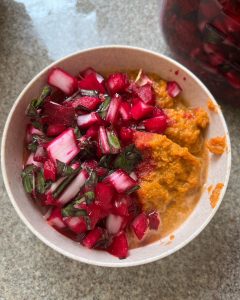
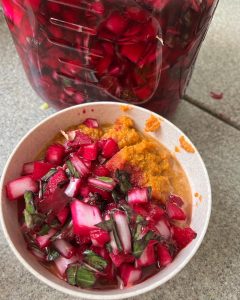

Thriving with Holistic Nutrition, Healing Foods, and Health Coaching


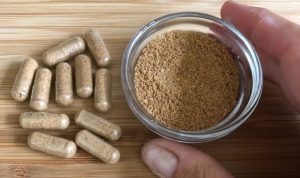
I compiled some essential information about supplements into a one-page handout and I hope you find it helpful.
Dietary Supplements: Essential Information
Hello!
I wanted to share some of the helpful websites that have science-based educational information on the American College of Lifestyle Medicine Pillars of Health (general health, nutrition, physical activity, sleep, stress, toxic exposures and social support). I will not get any commission or compensation in case you decide to visit these websites. I simply believe that these websites share reputable science-based information that you may find helpful. Feel free to reach out of you have any questions.
GENERAL WELLBEING:
NUTRITION and HYDRATION:
PHYSICAL ACTIVITY:
SLEEP:
STRESS:
SOCIAL SUPPORT:
TOXIC EXPOSURES:
Hello and Happy Holidays!!
The Holiday season is upon us and celebrating with delicious, festive food is an enjoyable part of the season.
Specifically, cranberry sauce is a common ingredient and traditional condiment that is typical for the Winter Holidays.
I wanted to introduce a homemade Cranberry Sauce that can be made from 3 ingredients and takes only about 5 minutes of your time.
There are added sugars, high-fructose corn syrup, colorants, or preservatives.
Watch a video below on how to make this recipe or just print it out.
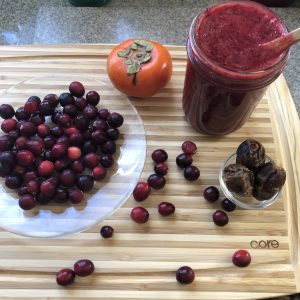
The ingredients:
The equipment:
The preparation:
Yield: 4 cups
Total servings: 16 (each serving is 1/4 cup)
Total calories: 500 kcal (31.25 kcal per serving)
This recipe makes about 4 cups of Cranberry Sauce, which can serve 16 people. You can also cut the recipe in half to make less of it.
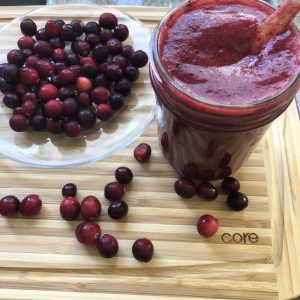
Watch a 1-minute video on how to make this recipe.

I hope you try this recipe. Let me know how it turned out for you.
Best wishes,
Nataliya
 Hello! Several years ago, I learned how to make raw chocolates from scratch. I believe that it was a recipe by Any Phyo that I found in the book and wanted to give a try as the chocolate-making at home seemed to be a pretty straightforward process.
Hello! Several years ago, I learned how to make raw chocolates from scratch. I believe that it was a recipe by Any Phyo that I found in the book and wanted to give a try as the chocolate-making at home seemed to be a pretty straightforward process.
In reality, the process was straightforward and a bit messy, however, the results were totally worth all the efforts. The homemade chocolates were so heavenly delicious that the store-bought varieties could not come anywhere close. Since then, I experimented with many different raw chocolate recipes. There are many variations posted on the internet. Some of them recommend using fewer oils or fats and more of the cacao powder, and vice versa. Others called for different types of sweeteners such as maple syrup or honey. All these recipes turned out pretty good. One thing I want to mention is that the quality of the ingredients really matters! To get the best tasting, smooth, homogenous, bitter-sweet chocolate, use the best ingredients that are available. You want to select the ingredients that are raw, unrefined, organic, and pure (without additives or preservatives or flavors). Today, I’m sharing with you one of the recipes that I like the most; I can call it a “full-proof” recipe. Every single time I followed this recipe, I got great results.
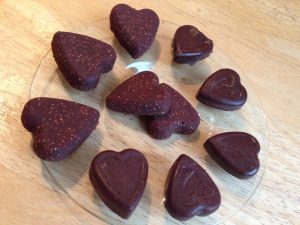
The ingredients:
Equipment:
The method of preparation:
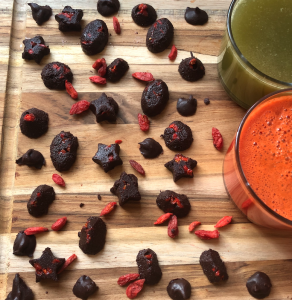
Enjoy! Nataliya
References: Baird, L. & Rodwel, J. (2005). The complete book of raw food. Healthy Living Books: New York, NY
Today, I was making a room spray with the essential oils. Next time when there is a cold or flu lurking around, the essential oils can help to cleanse and sanitize the air.* Many studies have documented the antibacterial, antifungal, antiviral, and antiparasitic qualities of the pure, unadulterated essential oils (Elshafie & Camele, 2017; Nieto et al., 2016; Sadlon & Lamson, 2010)*.
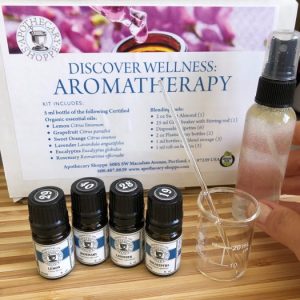
The essential oils, also known as volatile oils, are the natural and concentrated extracts. They are derived from the plants (flowers, leaves, barks, stems, seeds, berries, resins, or roots). The steam distillation, hydro-distillation, hydro-diffusion, or solvent extraction can be used to extract the essential oils. The composition of the essential oils is complex and consists mostly of synergistically acting terpenes, terpenoids (phenols, alcohols, aldehydes, ketones, or ethers) and aromatic compounds (Man et al., 2019).
Making a room spray takes only a few minutes. You will need the following equipment (ACHS, n.d.):
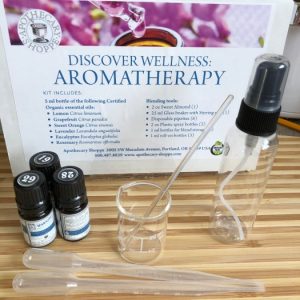
Because pure essential oils are very highly concentrated, they have to be diluted! For example, the general safety guidelines recommend diluting the pure essential oils until the final product contains only up to 4% of the essential oil. It means to use up to 6 to 24 drops of the essential oil per 1 ounce of solvent or 12-48 drops – per 2 ounces of solvent (ACHS, 2019; NAHA, 2019). A little amount literally goes a long way!
Additionally, the higher the quality of the essential oils, the better! Remember that you will be inhaling and absorbing all of the constituents of the essential oils into your body (Herman & Herman, 2015). Organic or wild-crafted 100% pure essential oils are the best, and their aroma is irresistible. Moreover, the pure, unadulterated essential oils can have a different effect on the body (Boren et al., 2015).*
Book your holistic nutrition and lifestyle consultation or health coaching session today! The initial 20-minute exploration session is free of charge.
Nataliya.
References:
American College of Healthcare Sciences (ACHS). (2019). Three common and dangerous essential oil mistakes. Retrieved from http://info.achs.edu/blog/aromatherapy-essential-oil-dangers-and-safety
ACHS. (n.d.). Three irresistible recipes for the aromatherapy body spray. Retrieved from http://info.achs.edu/blog/natural-holiday-perfumes-sprays-essential-oils
Boren, K. E., Young, D. G., Woolley, C. L., Smith, B. L., & Carlson, R. E. (2015). Detecting Essential Oil Adulteration. Journal of Environmental Analytical Chemistry, 2:132. doi: 10.4172/2380-2391.1000132
Elshafie, H. S., & Camele, I. (2017). An Overview of the Biological Effects of Some Mediterranean Essential Oils on Human Health. BioMed Research International, 2017, 9268468. doi:10.1155/2017/9268468
Herman, A. & Herman, A. P. (2015), Essential oils for transdermal drug delivery. Journal of Pharmacy and Pharmacology, 67: 473-485. doi:10.1111/jphp.12334
Man, A., Santacroce, L., Jacob, R., Mare, A., & Man, L. (2019). Antimicrobial Activity of Six Essential Oils Against a Group of Human Pathogens: A Comparative Study. Pathogens (Basel, Switzerland), 8(1), 15. doi:10.3390/pathogens8010015
NAHA. (2019). Safety information. Retrieved from https://naha.org/explore-aromatherapy/safety
Nieto, G., Ros, G., & Castillo, J. (2018). Antioxidant and Antimicrobial Properties of Rosemary (Rosmarinus officinalis, L.): A Review. Medicines (Basel, Switzerland), 5(3), 98. doi:10.3390/medicines5030098
Sadlon, A. E., & Lamson, D. W. (2010). Immune-Modifying and Antimicrobial Effects of Eucalyptus Oil and Simple Inhalation Devices. Alternative Medicine Review, 15(1): 33-47. Retrieved from http://archive.foundationalmedicinereview.com/publications/15/1/33.pdf
* These statements have not been evaluated by the Food and Drug Administration. These products are not intended to diagnose, treat, cure, or prevent any disease. This information is for educational purposes only.
Hello! This week, I made my own herbal powders from whole, organic, recently harvested herbs for the first time! Once I opened the packages with the Motherwort leaves and Hawthorn berries, the inspiring process of creation has started!
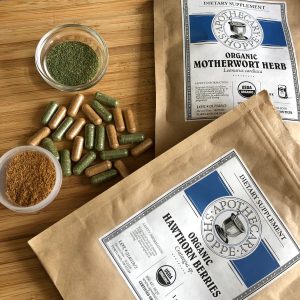
I used a mortar and pestle and Vitamix blender to crush and pulverize all components of these herbs into a fine powder. Both of these herbal powders smelled and tasted so fresh and looked so bright!
The Hawthorn Berries powder and capsules:
 Modern herbal therapy implements Hawthorn berries, leaves, and flowers. The Hawthorn plant has beneficial cardiovascular effects* (Holubarsch, Colucci, & Eha, 2018).
Modern herbal therapy implements Hawthorn berries, leaves, and flowers. The Hawthorn plant has beneficial cardiovascular effects* (Holubarsch, Colucci, & Eha, 2018).
The Motherwort powder and capsules: The Motherwort plant has anti-inflammatory, antioxidative, antimicrobial, tissue-protective, and sedative effects* (Fierascu et al., 2019).
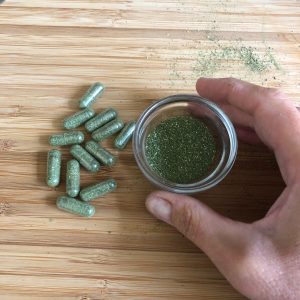 I used to take herbal powders prepared by the Ayurvedic practitioners as a Complementary and Alternative Medical (CAM) approach for different purposes: to relieve stomach discomfort, alleviate muscle pain, improve digestion and elimination, decrease stress, and reduce congestion* (Patwardhan, 2014). I loved Ayurvedic herbal preparations! Each one smelled and tasted differently and affected my body and mind in a positive way.
I used to take herbal powders prepared by the Ayurvedic practitioners as a Complementary and Alternative Medical (CAM) approach for different purposes: to relieve stomach discomfort, alleviate muscle pain, improve digestion and elimination, decrease stress, and reduce congestion* (Patwardhan, 2014). I loved Ayurvedic herbal preparations! Each one smelled and tasted differently and affected my body and mind in a positive way.
The herbal powders can be taken in a powdered form or as capsules. The herbal powders made at home can be the purest and the freshest ones, as you can select the best quality herbs (organic, wild-crafted, or even home-grown) and the best quality capsules while avoiding any other ingredients that seem unnecessary (fillers, pesticides, additives, preservatives, etc.). I was pleasantly surprised when I discovered that the Apothecary Shoppe listed the date of the harvest on each package with whole herbs. You can make the herbal powders in small batches to ensure freshness and maximum potency and prevent rancidity. Each batch can be stored in a refrigerator with a moisture absorbent packets.
It is best to contact a Certified Herbalist, an Ayurvedic Practitioner, or Naturopathic Doctor to inquire which herbs can be a good fit for your body as a part of the CAM approach to healing and wellness. In the United States, about 38% of adults (every 4 in 10) and 12% of children (every 1 in 9) are using some type of CAM.
The most common forms of CAM used in the U.S. include nutrition and diet-based therapy, herbs, Yoga, Pilates, Ayurveda, Traditional Chinese Medicine, energy healing/Reiki, and many others (John Hopkins Medicine, 2019; NIH, 2017). The CAM approaches are non-mainstream and can be used together with conventional mainstream medicine (NIH, 2019).
Contact me today to discuss your nutrition goals! Our initial 20-minute discussion is free of charge. To help you succeed with your health and wellness goals, I offer holistic nutrition consultations as well as wellness coaching.
References:
Fierascu, R. C., Fierascu, I., Ortan, A., Fierascu, I. C., Anuta, V., Velescu, B. S., … Dinu-Pirvu, C. E. (2019). Leonurus cardiaca L. as a Source of Bioactive Compounds: An Update of the European Medicines Agency Assessment Report (2010). BioMed Research International, 2019, 4303215. doi:10.1155/2019/4303215
Holubarsch, C., Colucci, W. S., & Eha, J. (2018). Benefit-Risk Assessment of Crataegus Extract WS 1442: An Evidence-Based Review. American Journal of Cardiovascular Drugs : Drugs, Devices, and Other Interventions, 18(1), 25–36. doi:10.1007/s40256-017-0249-9
John Hopkins Medicine. (2019). Types of Complementary and Alternative Medicine. Retrieved from https://www.hopkinsmedicine.org/health/wellness-and-prevention/types-of-complementary-and-alternative-medicine
NIH National Center for Complementary and Integrative Health. (2017). The use of Complementary and Alternative Medicine in the United States. Retrieved from https://nccih.nih.gov/research/statistics/2007/camsurvey_fs1.htm
NIH National Center for Complementary and Integrative Health. (2019). Complementary, Alternative, or Integrative Health: What’s in a Name? Retrieved from https://nccih.nih.gov/health/integrative-health
Patwardhan, B. (2014). Bridging Ayurveda with evidence-based scientific approaches in medicine. The EPMA Journal, 5(1), 19. doi:10.1186/1878-5085-5-19
*These statements have not been evaluated by the Food and Drug Administration. These products are not intended to diagnose, treat, cure, or prevent any disease. This information is for educational purposes only.
Happy Independence Day weekend to everybody! It is a middle of the year and almost a middle of the summer. What is your favorite summer-time activity? For me, it is the appreciation of the long days filled with the sunshine and the delicious and colorful summer foods.
 Today, I’m sharing with you one of my favorite recipes – the quinoa pancakes.
Today, I’m sharing with you one of my favorite recipes – the quinoa pancakes.
It needs just a few ingredients, is easy to make, and tastes very good. Actually, both the sweet and savory versions of this recipe can be enjoyed year-round.
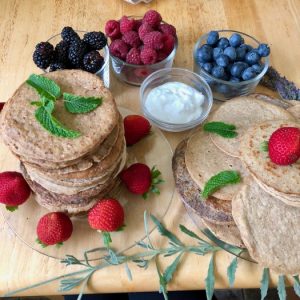 You will need the following ingredients:
You will need the following ingredients:
That’s it. You may use a little bit of coconut oil, however, it is optional if you use a non-stick skillet.
You will need this equipment: a bowl, blender, and non-stick skillet. The amount of preparation time can be reduced if you have more than one skillet. I typically use 3 small non-stick skillets, and in this case, the total preparation time takes about 5-7 minutes.
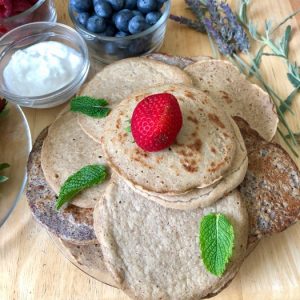 What I love about this recipe is that the pancakes have a neutral taste and can be enjoyed with both sweet and savory meals or snacks. As a sweet version, I like to serve them with berries, fruits, and coconut yogurt. For a savory twist, I serve them with veggies, salads, and dressings (taco-like style). On this image below, you can see 3 pancakes, each served with the arugula leaves, slices of tomato and red onion, and avocado cubes. In this version, the pancakes work as flatbreads or soft tacos.
What I love about this recipe is that the pancakes have a neutral taste and can be enjoyed with both sweet and savory meals or snacks. As a sweet version, I like to serve them with berries, fruits, and coconut yogurt. For a savory twist, I serve them with veggies, salads, and dressings (taco-like style). On this image below, you can see 3 pancakes, each served with the arugula leaves, slices of tomato and red onion, and avocado cubes. In this version, the pancakes work as flatbreads or soft tacos.
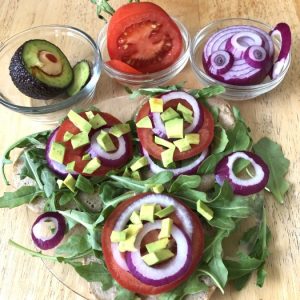 Additionally, I soaked and sprouted the quinoa seeds, which is an easy step that can improve the digestibility and nutrient availability. Moreover, soaked and sprouted quinoa gives you more pancakes if compared with those made from the unsoaked quinoa. Note that this recipe does not need any flour; the whole quinoa seeds were soaked and sprouted and blended together with banana, flax seeds, and water. Here is a full recipe, enjoy!
Additionally, I soaked and sprouted the quinoa seeds, which is an easy step that can improve the digestibility and nutrient availability. Moreover, soaked and sprouted quinoa gives you more pancakes if compared with those made from the unsoaked quinoa. Note that this recipe does not need any flour; the whole quinoa seeds were soaked and sprouted and blended together with banana, flax seeds, and water. Here is a full recipe, enjoy!
Download the recipe: Quinoa Pancakes
By the way, it is the middle of the year, and I’m wondering how are your new year resolution goals doing? How successful have you been so far? Which obstacles came your way?
Let’s discuss how I can help you to get back on track during the next 6 months.
Our first 20-minute discovery session is free of charge, and I can work with you as a wellness coach or/and a nutrition consultant, depending on your needs. Contact me today, I’m happy to see how I can help!
In best health,
Nataliya.